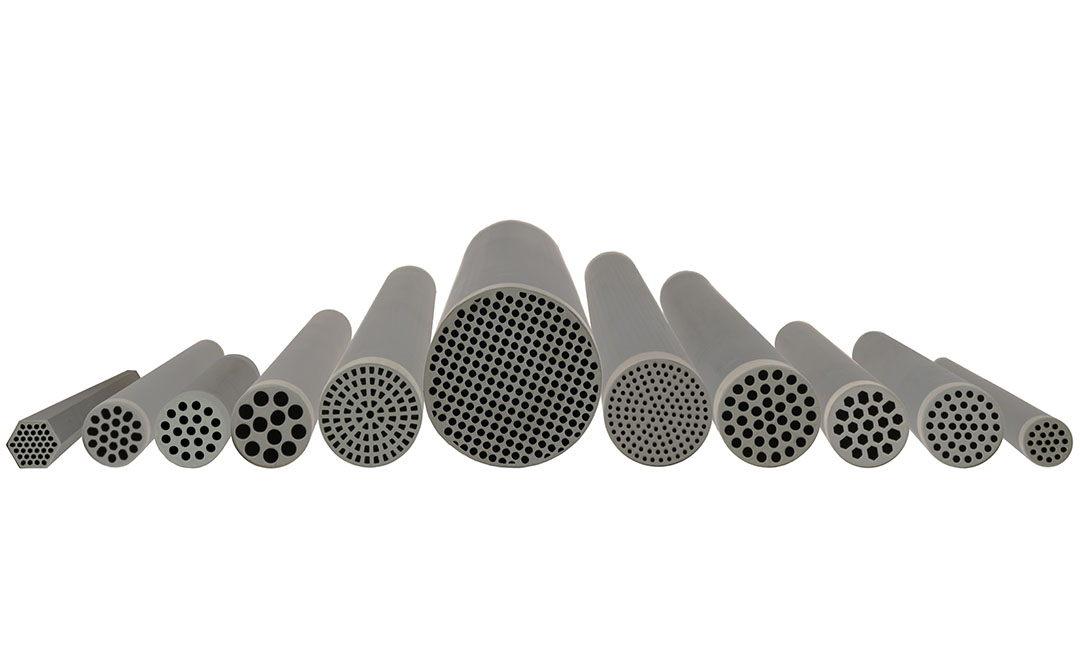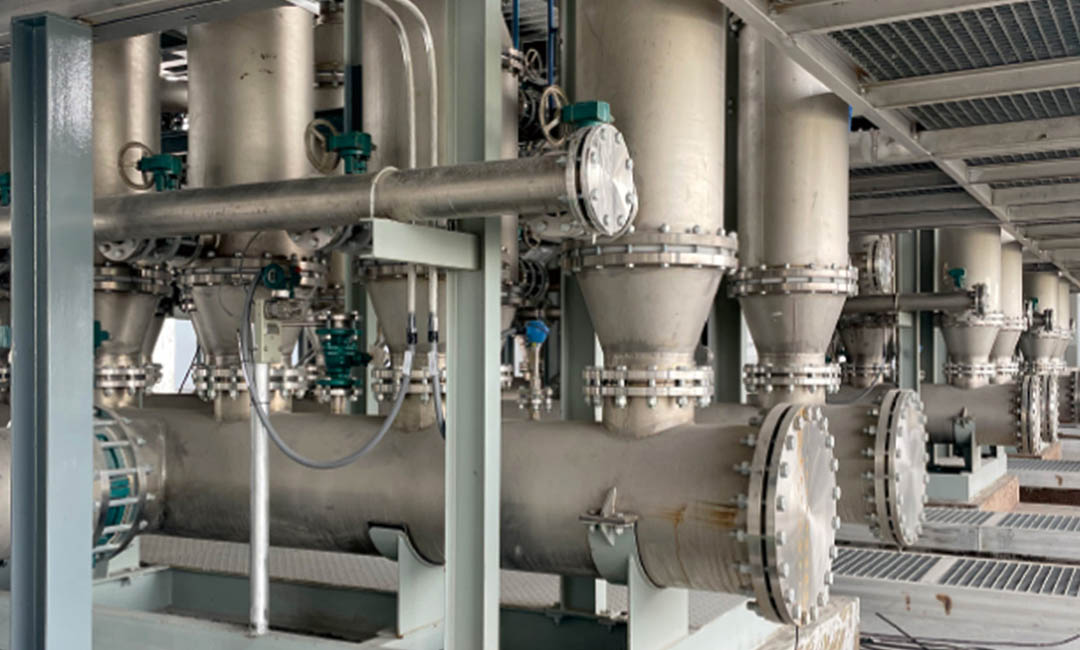Enhanced Filtration Efficiency of SiC Membranes
Silicon carbide (SiC) membranes have emerged as a transformative technology in the field of wastewater treatment, primarily due to their enhanced filtration efficiency. This efficiency is rooted in the unique properties of SiC, which include high mechanical strength, thermal stability, and chemical resistance. These characteristics enable SiC membranes to operate effectively under a wide range of conditions, making them suitable for various wastewater treatment applications. As the demand for clean water continues to rise, the ability of SiC membranes to provide superior filtration solutions becomes increasingly significant.

One of the key advantages of SiC membranes is their exceptional pore structure, which allows for precise control over the size and distribution of pores. This feature is crucial in wastewater treatment, as it enables the membranes to selectively filter out contaminants while allowing clean water to pass through. The fine-tuned pore sizes of SiC membranes facilitate the removal of suspended solids, bacteria, and even larger organic molecules, thereby improving the overall quality of treated water. Furthermore, the high permeability of SiC membranes ensures that the filtration process remains efficient, minimizing energy consumption and operational costs.
In addition to their structural advantages, SiC membranes exhibit remarkable resistance to fouling, a common challenge in traditional filtration systems. Fouling occurs when particles accumulate on the membrane surface, leading to reduced flow rates and increased maintenance requirements. However, the hydrophilic nature of SiC surfaces helps to mitigate this issue by promoting better water flow and reducing the adhesion of foulants. As a result, SiC membranes maintain their filtration efficiency over extended periods, reducing the need for frequent cleaning and replacement. This durability not only enhances the operational efficiency of wastewater treatment plants but also contributes to lower long-term costs.
Moreover, the chemical stability of SiC membranes allows them to withstand harsh operating conditions, including exposure to aggressive chemicals and extreme pH levels. This resilience is particularly beneficial in industrial wastewater treatment, where effluents may contain a variety of toxic substances. By maintaining their integrity in such challenging environments, SiC membranes ensure consistent performance and reliability, further solidifying their role as a leading technology in wastewater treatment.
The integration of SiC membranes into existing treatment processes also presents opportunities for innovation. For instance, when combined with advanced oxidation processes or biological treatment methods, SiC membranes can enhance the overall efficiency of the treatment system. This synergy not only improves the removal of contaminants but also enables the recovery of valuable resources from wastewater, such as nutrients and energy. As a result, the adoption of SiC membranes aligns with the growing emphasis on sustainability and resource recovery in wastewater management.
In conclusion, the enhanced filtration efficiency of SiC membranes positions them at the forefront of wastewater treatment technologies. Their unique properties, including superior pore structure, resistance to fouling, and chemical stability, contribute to their effectiveness in removing contaminants and maintaining operational efficiency. As the global water crisis intensifies, the role of SiC membranes in providing reliable and sustainable wastewater treatment solutions will undoubtedly become more prominent. By embracing this innovative technology, industries and municipalities can not only improve water quality but also contribute to a more sustainable future.
Long-Term Durability and Cost-Effectiveness
Silicon carbide (SiC) membranes have emerged as a transformative technology in the field of wastewater treatment, primarily due to their long-term durability and cost-effectiveness. As the demand for efficient and sustainable water treatment solutions continues to rise, the advantages offered by SiC membranes become increasingly significant. One of the most compelling attributes of SiC membranes is their exceptional resistance to harsh environmental conditions. Unlike traditional polymeric membranes, which can degrade over time due to exposure to chemicals, temperature fluctuations, and mechanical stress, SiC membranes maintain their structural integrity and performance over extended periods. This durability not only extends the lifespan of the membranes but also reduces the frequency of replacements, thereby minimizing operational disruptions and maintenance costs.
Moreover, the inherent properties of silicon carbide contribute to its resilience. SiC exhibits high thermal stability and chemical inertness, making it suitable for a wide range of wastewater applications, including those involving aggressive chemicals and high temperatures. This versatility allows facilities to treat various types of wastewater without the need for extensive pre-treatment processes, further enhancing the overall efficiency of the treatment system. As a result, industries can achieve significant cost savings by reducing the need for additional equipment and chemicals, which are often required to protect less durable membranes.
In addition to their durability, SiC membranes also offer impressive filtration performance, which translates into cost-effectiveness over time. The membranes are capable of achieving high flux rates while effectively removing contaminants, including suspended solids, bacteria, and even some dissolved substances. This high-performance filtration capability means that wastewater treatment plants can process larger volumes of water in a shorter time frame, thereby increasing throughput and operational efficiency. Consequently, facilities can optimize their resources and reduce energy consumption, leading to lower operational costs.
Furthermore, the long-term durability of SiC membranes contributes to their overall sustainability. By minimizing the need for frequent replacements, these membranes reduce the amount of waste generated from discarded filtration materials. This aspect is particularly important in an era where environmental concerns are paramount, and industries are increasingly held accountable for their waste management practices. The longevity of SiC membranes aligns with the principles of sustainable development, allowing facilities to meet regulatory requirements while also enhancing their corporate social responsibility profiles.

Transitioning to the economic implications, the initial investment in SiC membrane technology may be higher than that of traditional options. However, when considering the total cost of ownership, including maintenance, replacement, and operational costs, SiC membranes often prove to be more economical in the long run. The reduced frequency of replacements and lower maintenance requirements lead to significant savings over time, making SiC membranes a financially sound choice for wastewater treatment facilities.
In conclusion, the long-term durability and cost-effectiveness of silicon carbide membranes position them as a leading solution in wastewater treatment. Their ability to withstand harsh conditions, coupled with high filtration performance, not only enhances operational efficiency but also aligns with sustainability goals. As industries continue to seek innovative and reliable solutions for wastewater management, SiC membranes are poised to play a pivotal role in shaping the future of this essential sector. By investing in this advanced technology, facilities can ensure a more sustainable and economically viable approach to wastewater treatment, ultimately benefiting both their operations and the environment.
Environmental Benefits of Using SiC Membranes in Wastewater Treatment
Silicon carbide (SiC) membranes are emerging as a transformative technology in the field of wastewater treatment, offering a range of environmental benefits that address the pressing challenges of water scarcity and pollution. As the global population continues to grow, the demand for clean water has intensified, leading to an urgent need for efficient and sustainable wastewater management solutions. SiC membranes stand out due to their unique properties, which not only enhance the treatment process but also contribute to a more sustainable approach to water resource management.
One of the most significant environmental benefits of SiC membranes is their exceptional durability and chemical resistance. Unlike traditional polymeric membranes, SiC membranes can withstand harsh chemical environments, making them suitable for treating a wide variety of wastewater streams, including those laden with organic solvents and corrosive substances. This resilience reduces the frequency of membrane replacement, thereby minimizing waste generation and the environmental impact associated with the disposal of used membranes. Furthermore, the longevity of SiC membranes translates into lower operational costs, which can encourage more facilities to adopt advanced treatment technologies.
In addition to their durability, SiC membranes exhibit superior filtration performance. Their fine pore structure allows for the effective removal of suspended solids, bacteria, and even viruses, resulting in high-quality effluent that meets stringent regulatory standards. This capability not only protects public health but also enhances the potential for water reuse. As water scarcity becomes an increasingly critical issue, the ability to recycle treated wastewater for agricultural, industrial, or even potable uses is invaluable. By facilitating water reclamation, SiC membranes contribute to the conservation of freshwater resources, thereby promoting a more sustainable water cycle.
Moreover, the energy efficiency of SiC membranes is another compelling advantage. Traditional wastewater treatment processes often require significant energy inputs, particularly in the aeration and pumping stages. In contrast, SiC membranes can operate effectively at lower pressures, which reduces energy consumption during filtration. This energy efficiency not only lowers operational costs but also decreases the carbon footprint associated with wastewater treatment facilities. As the world grapples with climate change and the need to reduce greenhouse gas emissions, the adoption of energy-efficient technologies like SiC membranes becomes increasingly important.
Additionally, the use of SiC membranes can lead to a reduction in the production of sludge, a common byproduct of conventional wastewater treatment processes. The generation of excess sludge poses significant disposal challenges and environmental concerns, as it often requires further treatment and landfilling. SiC membranes, by providing a more efficient separation process, can minimize sludge production, thereby alleviating some of the burdens associated with sludge management. This reduction not only simplifies the treatment process but also lessens the environmental impact of wastewater treatment facilities.
In conclusion, the environmental benefits of using SiC membranes in wastewater treatment are multifaceted and significant. Their durability, superior filtration capabilities, energy efficiency, and potential to reduce sludge production position them as a leading technology in the quest for sustainable wastewater management. As industries and municipalities increasingly seek innovative solutions to address water scarcity and pollution, SiC membranes offer a promising pathway toward a more sustainable and resilient water future. By embracing this advanced technology, we can enhance the quality of treated wastewater while simultaneously protecting our precious water resources for generations to come.

